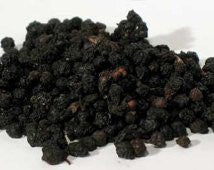
How to Make Elderberry Syrup
We make quite a few organic herbal remedies here including tinctures, salves and herbal syrups. Today we made more Organic Elderberry Syrup using organic dry elderberry. *One of the benefits...
Mary Smith |
Welcome to our store Learn more

We make quite a few organic herbal remedies here including tinctures, salves and herbal syrups. Today we made more Organic Elderberry Syrup using organic dry elderberry. *One of the benefits...
Mary Smith |

First let me start by saying that there is no quick fix or perfect concoction that works for everyone to boost Metabolism. There is no magical "cure." What I have...
Mary Smith |
Our latest e-newsletter is PACKED with info on Herbs, Herbal Remedies and Special Offers. Check it out! Mary's Heirloom Seeds Quick Links Echinacea Coconut Coir Pellets POPPY Seed Starting SUPPLIESOrganic...
Mary Smith |
Making your own herbal home remedies is easy. Herbal tea is a great start but Tinctures can a much stronger alternative. The cost to purchase 2 ounces in the store...
Mary Smith |
Making your own herbal home remedies is easy. Herbal tea is a great start but Tinctures can be a much stronger alternative. The cost to purchase 2 ounces in the...
Mary Smith |
Another recipe for alternative "medicine." For my allergy tincture I use a special blend from Mary's Heirloom Seeds DIY Tincture Kit. It is an herbal combination which can be...
Mary Smith |
Making your own herbal home remedies is easy. Herbal tea is a great start but Tinctures can a much stronger alternative. The cost to purchase 2 ounces in the store...
Mary Smith |
It's another beautiful day here. The air is cool and crisp. The sun is shining and life is good! Today I'm talking Tinctures! In our house, we use tinctures first...
Mary Smith |
Making your own herbal home remedies is easy. Herbal tea is a great start but Tinctures can a much stronger alternative. The cost to purchase 2 ounces in the store...
Mary Smith |

YARROW, A great herb for Women's Health In case you missed the very first post in our Herbal Series, check out Boost Your Health with Organic Herbs There are...
Mary Smith |